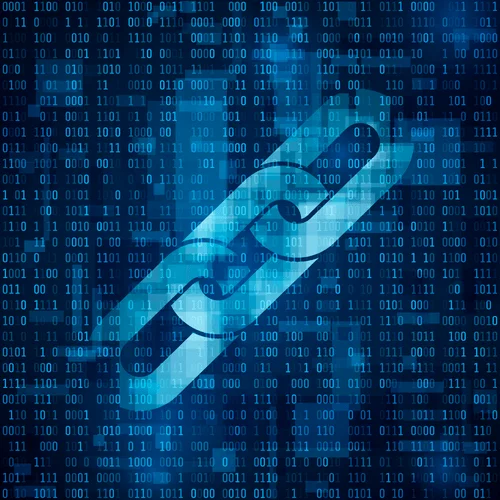Each paradigm comes with unique benefits tailor-made to specific use cases and industries. For instance, fog computing is good for situations the place real-time processing and low latency are critical, similar to industrial IoT applications and healthcare methods. Edge computing, then again, is perfect for functions like autonomous automobiles and distant monitoring, the place quick data analysis at the source is important. Cloud computing, with its scalability and suppleness, is invaluable for internet purposes, collaboration instruments, and knowledge storage.
On one hand, cloud computing is very depending on having a robust and dependable core network. Without a high-quality network, information can become corrupted or lost, which may have critical consequences for customers. In distinction, fog computing takes a decentralized approach, counting on methods on the fringe of the network, such as individual units or sensors, to retailer and course of knowledge.
The considerable processing power of edge nodes allows them to compute giant quantities of knowledge with out sending them to distant servers. These instruments will produce huge quantities of knowledge that should be processed quickly and completely. F fog computing works similarly to cloud computing to fulfill the rising demand for IoT solutions.
Fog computing is a extra decentralized type of cloud computing whereby the computing technology is between a cloud and a data supply or one other knowledge heart. The integration of the Internet of Things with the cloud is a cheap approach to do enterprise. Cloud computing has advanced safety measures in place to safe knowledge within the cloud, whereas fog computing focuses on providing security measures to edge devices. Cloud applied sciences are already bringing a quantity of advantages to the IoT, however progress doesn’t end right here. Here is a development about cloud computing is essentially the most distinguished form of IoT knowledge administration.
We supply a variety of companies at unbeatable prices that might be personalized in every way to match your wants. As a end result, the demand for quick and sustainable ways to process huge amounts of data has risen. The new technology is prone to have the greatest influence on the event of IoT, embedded AI and 5G options, as they, like never earlier than, demand agility and seamless connections. Unfortunately, there is nothing immaculate, and cloud expertise has some downsides, particularly for the Internet of Things companies. Edge figuring was made because of Internet of Things devices‘ momentous advancement, which partners with the online to tolerate info from the cloud or cross on knowledge back to the cloud.
It aims to offer real-time processing, low-latency communication, and lowered bandwidth usage by decentralizing computation and storage capabilities to edge devices and fog nodes. Both utilize networks of knowledge facilities which are distributed across different locations, allowing for elevated mobility and suppleness in accessing data. Whereas cloud computing depends heavily on centralized servers and communication channels, Fog computing spreads sources extra evenly all through the community. At a basic stage, cloud computing and fog computing are comparable in that they both involve the remote use of computing energy and resources. However, in relation to capacity, there are some essential differences between the 2 approaches.
Cloud Service Supplier
However, fog computing is a more viable option for managing high-level security patches and minimizing bandwidth issues. Fog computing allows us to locate knowledge on every node on local sources, thus making knowledge evaluation extra accessible. Fog can even embrace cloudlets – small-scale and quite powerful information centers situated at the network’s edge. They are meant to help resource-intensive IoT apps that require low latency. Fog networks rely on a decentralized approach, with methods on the network’s edge, such as sensors or devices, storing and processing knowledge.
The considerable processing power of edge nodes allows them to perform the computation of a great amount of data on their own, without sending it to distant servers. Cloud computing primarily focuses on large-scale knowledge processing, storage, and long-term analytics. It provides fog computing vs cloud computing vast computing resources and scalable storage in centralized knowledge centers, allowing for batch processing, advanced analytics, and storage of large amounts of knowledge.
Connecting your organization to the cloud, you get access to the above-mentioned services from any location and through different devices. Moreover, there isn’t a need to maintain local servers and worry about downtimes — the seller supports everything for you, saving you money. They depend on sensors and cameras situated throughout the automobile to gather data and make choices about the method to navigate and operate the vehicle. As such, when contemplating the professionals and cons of cloud vs fog computing, the query of location awareness becomes an important issue to consider. In addition to providing fast and quick access to info, cloud computing also permits for real-time collaboration among individuals and organizations.
Benefits Of Fog Computing In Iot
With billions of related gadgets producing huge amounts of information, it has turn into crucial to have efficient computing models that can handle this information successfully. Two such fashions which https://www.globalcloudteam.com/ have emerged as in style decisions for IoT initiatives are fog computing and cloud computing. This article aims to discover the professionals and cons of fog computing and cloud computing, serving to you make an knowledgeable determination for your IoT project.

This blog covers numerous topics on industrial automation corresponding to operations & administration, continuous & batch processing, connectivity, manufacturing & machine control, and Industry four.0. The new know-how is likely to have the largest influence on the development of IoT, embedded AI, and 5G options, as they, like never earlier than, demand agility and seamless connections. Unfortunately, nothing is spotless, and cloud know-how has some drawbacks, especially for Internet of Things providers. If you’re looking for one of the best devoted server supplier to increase efficiency, contact RedSwitches right now.
Fog Computing Vs Cloud Computing
In the sphere of sensible cities, fog computing is utilized in visitors administration methods. By deploying edge servers at intersections, real-time visitors information could be processed regionally, reducing latency and enabling efficient site visitors management. In contrast, cloud computing is utilized in applications like power administration, the place huge amounts of data from sensible meters are analyzed within the cloud to optimize power consumption.

By rigorously evaluating components similar to information processing requirements, latency tolerances, and data safety needs, you’ll have the ability to select the paradigm that aligns greatest together with your organization’s targets and technological calls for. Cloud computing, on the other hand, is a centralized computing mannequin that depends on remote servers to retailer, manage, and process data. In cloud computing, the information generated by IoT devices is transmitted to cloud servers through the web for analysis and storage. Firstly, it provides virtually unlimited storage and computing energy, permitting for the handling of large datasets. Secondly, cloud computing presents seamless scalability, enabling simple growth because the project grows. Lastly, it supplies accessibility and adaptability, allowing customers to entry data and purposes from anyplace with an web connection.
Cloud Computing Vs Fog Computing: Key Differences
It extends the capabilities of edge computing by offering a layer of computing infrastructure between the sting units and the cloud. This infrastructure is known as the fog layer, and it offers extra computing sources and services to edge units. In conclusion, fog computing and cloud computing are two distinct computing models that offer distinctive advantages and limitations for IoT initiatives. While fog computing excels in low latency, enhanced privateness, and offline capabilities, cloud computing shines in scalability, intensive storage, and accessibility.
Firstly, think about the character of your software and the precise necessities it entails. If real-time response and privateness are paramount, fog computing will be the better option. Conversely, if your project entails intensive information evaluation and scalability, cloud computing may be extra suitable. Furthermore, the supply of sources, price range constraints, and the level of management you require over your information should be thought of.
Client-based fog computing is good for applications that require real-time processing, similar to autonomous vehicles and industrial IoT. Edge computing and fog computing are two ideas which would possibly be typically used interchangeably, but they’ve essential differences. Edge computing is a decentralized computing model that brings information processing nearer to the units and sensors that generate it. Fog computing, however, is a distributed computing mannequin that extends the capabilities of edge computing to a bigger network of units and sensors. Cloud computing relies on centralized knowledge centers, usually situated in remote areas, serving a variety of purchasers over the web. The physical distance between the cloud infrastructure and end-users can introduce latency and potential bandwidth limitations.
- Moreover, concerns about data privacy and security come up when sensitive knowledge is transmitted and saved on remote servers.
- For occasion, you might need to deploy cyber asset assault floor administration (CAASM) software program to investigate and resolve potential vulnerabilities and entry factors in computing infrastructures.
- Only in cloud computing, it is possible to integrate a quantity of data sources, together with the gadget and the cloud computing information supply.
- Cloud computing addresses these challenges by providing computing assets as scalable, on-demand companies.
As the demand for info increases, extra networking channels will emerge. The fog computing vs. cloud computing battle will continue as businesses search to handle and disseminate information extra quickly and sustainably. This helps to ensure that data processing and evaluation can proceed even if some units or servers fail. Fog and edge computing can improve safety by offering further security measures to edge devices, such as encryption and authentication.
Cons Of Cloud For Iot
It’s related to operating applications as actually shut as potential to the positioning the place the data is being made as a substitute of bringing collectively cloud or information accumulating zone. Cloud computing offers far more superior and higher processing technological capabilities than fog and edge frameworks. It lets you save more knowledge than the other two with limited processing power. Only in cloud computing, it is attainable to integrate a number of data sources, together with the system and the cloud computing information supply. Cloud fails without an internet connection, whereas Fog succeeds even with out one as a end result of it follows many procedures and rules. Compared to fog computing, cloud computing has a sooner system response time.
